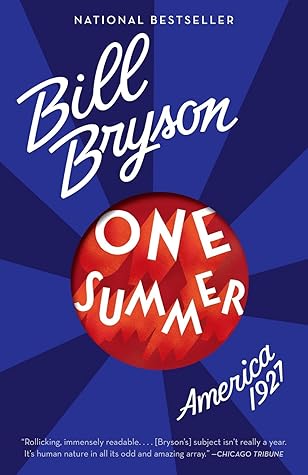More on this book
Community
Kindle Notes & Highlights
Increasingly dissatisfied with her marriage, Ruth tricked her unsuspecting hubby into signing a life insurance policy with a double indemnity clause providing nearly $100,000 in the event that he met a violent end, and she now doggedly dedicated herself to making sure he did. She dosed his evening whiskey with poison and whisked it into his prune whip (a feature of the affair much dwelled on by reporters). When that failed to slow him, she added crushed sleeping pills to the concoction, gave him bichloride of mercury tablets on the pretext that they were a healthful medicine, and even tried
...more
The critic Edmund Wilson wondered in an essay why it was that something so dull and unimaginative as the Snyder murder excited such earnest attention, without pausing to reflect that the same question could be asked of his essay.
The murder of poor Albert Snyder had one other unusual feature: the people responsible were caught. That didn’t actually happen much in America in the 1920s. New York recorded 372 murders in 1927; in 115 of those cases no one was arrested. Where arrests were made, the conviction rate was less than 20 percent. Nationally, according to a survey made by the Metropolitan Life Insurance Company—and it is notable that the best records were kept by insurers, not police authorities—two-thirds of America’s murders were unsolved in 1927. Some localities couldn’t even achieve that grimly unsatisfactory
...more
One hour and forty minutes later the jurors shuffled back in with their verdicts: both defendants were guilty of murder in the first degree. Ruth Snyder wept bitterly in her seat. Judd Gray, face flushed, stared hard at the jury but without animosity. Justice Scudder set sentencing for the following Monday, though that was really just a formality. The penalty for murder in the first degree was death by electrocution.
Ruth in 1918 actually hit 12 home runs, but one was a walk-off homer, and in those days the person who hit a game-winning home run was awarded only the number of bases needed to score the winning run, so Ruth’s 12th homer was recorded as a triple.
Lindbergh leaned into the microphone, for it was set a little low for him, expressed pleasure at being present, said a very few words of thanks, and stepped back. A moment of eerie stillness followed as it dawned on the watching throngs, most of whom had been standing in the hot sun for hours, that they were in the presence of two of the most taciturn men in America and that this ceremony was over. But then, recovering their sense of occasion, the people burst into riotous applause and “clapped until their hands were numb.” Many wept here, too.
Ruth had fallen for a model and actress named Claire Merritt Hodgson. A native of Georgia, Hodgson had—to put it mildly—a full and lively past.
the Age of Loathing. There may never have been another time in the nation’s history when more people disliked more other people from more directions and for less reason.
Bigotry was casual, reflexive, and well nigh universal. At The New Yorker, Harold Ross forbade the use of the term toilet paper on grounds of taste (it made him queasy), but he had nothing at all against nigger or darkie. In the week before Lindbergh’s flight to Paris, The New Yorker ran a cartoon with the immortally dismal line “Niggers all look alike to me.”
were being deported from Ellis Island than were coming in through it.


